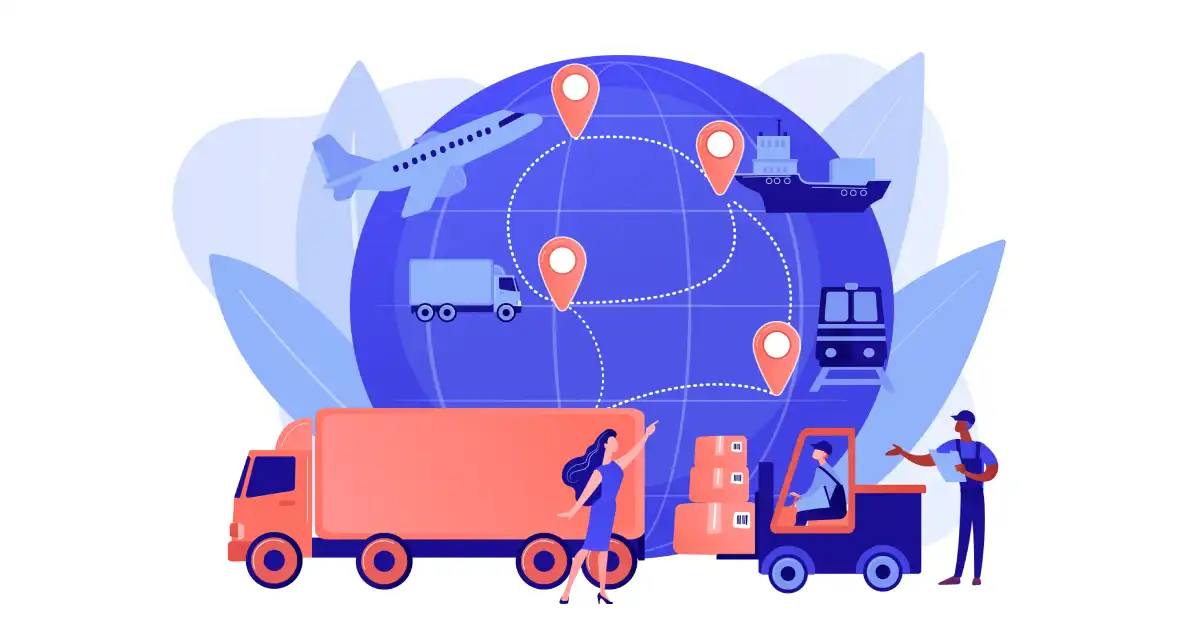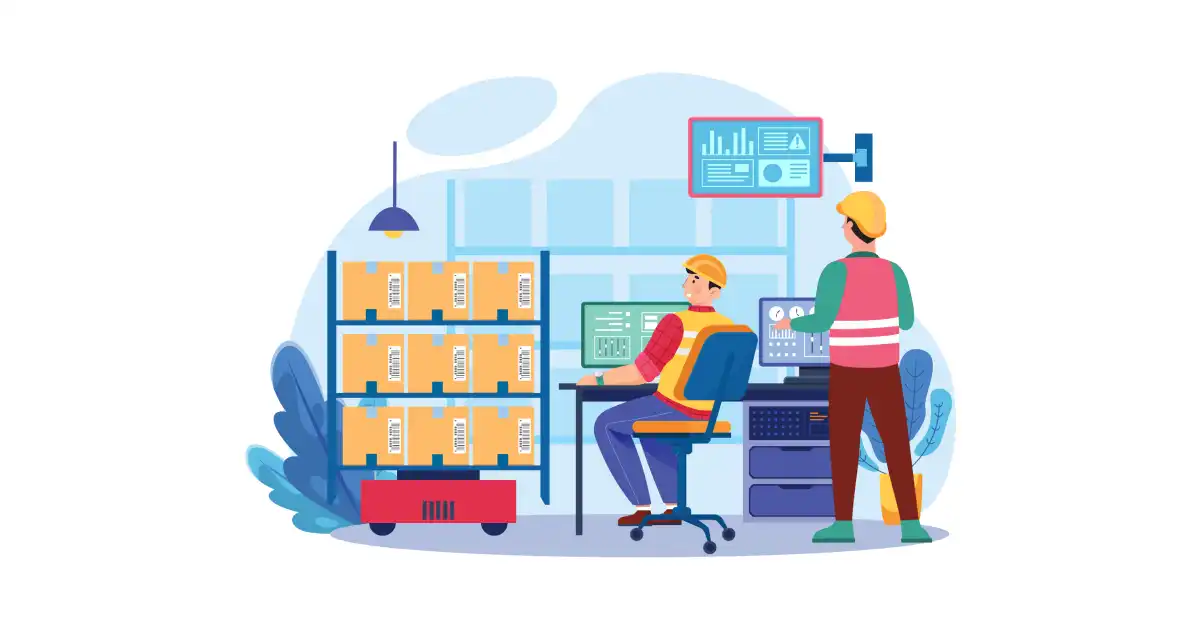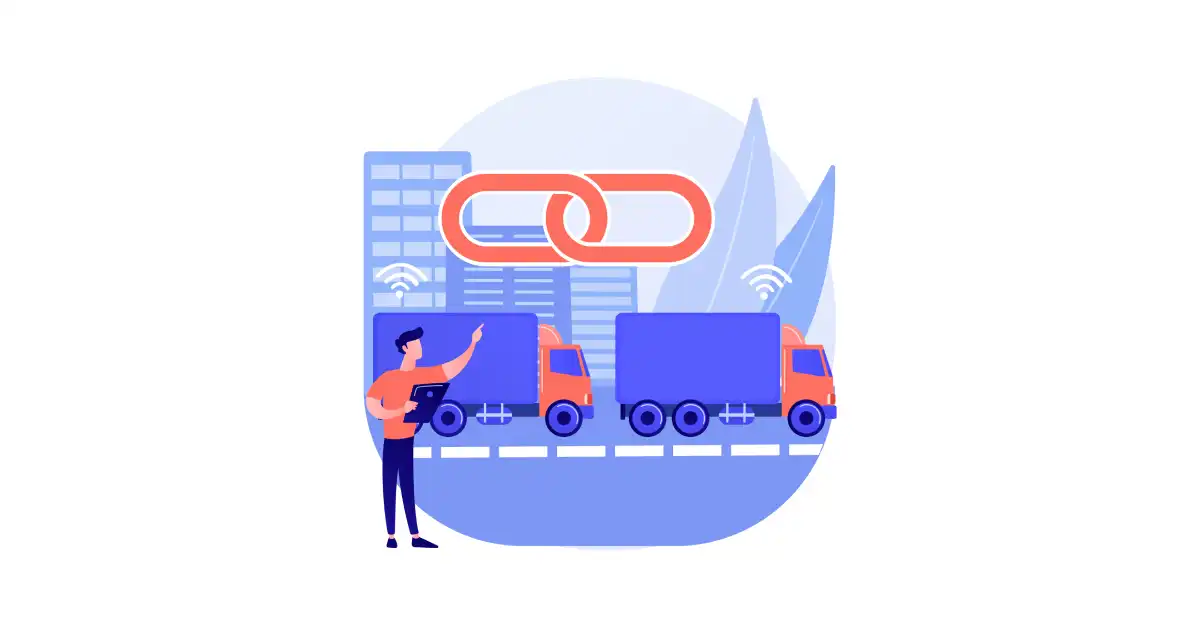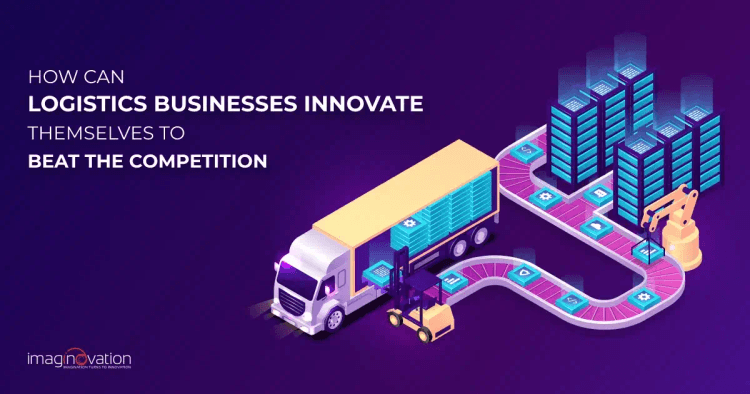The logistics industry is constantly evolving, with growing demands for transparency and accountability.
Companies have realized that they must innovate to improve efficiency and stay ahead in the face of increased regulations and product liability claims.
Success now requires innovation throughout the entire supply chain.
But what is innovation in the logistics business?
Is it just a new way of ensuring faster goods delivery? Faster delivery vehicles?
Actually, innovation in the logistics business covers a wide range of aspects - new inventions, advanced technology deployment, improved processes, and even modern infrastructure.
A survey was conducted by Descartes and SAPIO Research of around 1,000 logistics executives in North America and Europe. The goal was to find out what these executives are focusing on when it comes to innovation.
The research found that companies are mainly focusing on innovative digital initiatives in the following areas: order fulfillment (47%), customer experience (45%), and transportation processes (44%).
In this blog, we explore the importance of innovation in the logistics industry.
We also highlight some examples of innovative logistics solutions and discuss ways logistics businesses can foster a culture of innovation to drive success.
Let’s begin!
The Changing Landscape of Logistics Business
Logistics is evolving at an unprecedented pace. As a result, traditional transportation, warehousing, and distribution methods are rapidly becoming obsolete.
That’s why the logistics sector has started adjusting to - newer technologies, changing consumer preferences, and evolving global trade patterns.
However, one of the key challenges facing the industry is the growing demand for faster delivery of goods.
Customers want their shipments to be delivered quickly, more flexibly, and at a lower cost with absolute transparency.
This puts pressure on the logistics industry, affecting their operating models and profits.
It has led to a boost in e-commerce and same-day delivery services, which require speed and flexibility in logistics operations.
Additionally, sustainability and environmental concerns are becoming important for logistics companies as they seek to reduce their carbon footprint and minimize waste.
As if this isn't enough, there is competition from new entrants, trade regulations are changing, and labor and fuel costs are rising. All of this is making the situation more challenging.
To address these challenges, logistics companies need to innovate.
That's why they have started deploying technologies such as automation, big data analytics, and AI/ML to improve efficiency and visibility across their supply chain.
So newer and innovative digital solutions are changing how logistics companies work. And digital fitness has become a vital success parameter for these companies.
The rule of the game is simple here - If you don't keep up with the changing scenario, you risk becoming outdated.
Also Read: How a Custom AR App can Improve Operational Efficiency in Logistics Businesses?
Importance of Innovation in Logistics Business
Innovation is crucial in logistics. Whenever an innovation is introduced to logistics, it brings a positive effect on multiple other processes.
Here’s why you must regularly innovate your logistics business:

1. Stand out.
Innovative ways and digital solutions can make your business stand out from the competition and attract new customers. It’ll boost your brand awareness. Additionally, innovation is needed to highlight the unique values that you are already providing.
2. Offer better customer experience.
An innovative approach can help create a better customer experience by providing more transparency, tracking, and personalized services.
3. Build new and efficient processes.
In logistics, innovation is all about improved and efficient processes and operations. By developing new and more effective processes, you can improve your operations, reduce costs, and enhance customer satisfaction.
4. Don’t want to fall behind in the competition.
If you don't constantly innovate in logistics, you risk falling behind the competition, who may be continuously improving their offerings and staying ahead of the game. Therefore, to remain relevant and competitive, exploring new innovative ideas is essential.
5. Talent Attraction.
Innovation can help attract and retain top talent in your logistics business by providing them with modern technology and tools.
Ways for Logistics Businesses to Innovate Themselves
You must've heard the saying, "Change is the only constant."
But what does that mean for your logistics business?
Well, let us help you. We've put together some ways you can innovate your logistics business. This can help you remain prepared for anything.
1. Embrace sustainability
There are many ways logistics businesses like yours can adopt sustainable practices and cut down their carbon footprints.
You can opt for eco-friendly packaging, reduce waste, and use alternative modes of transportation such as electric vehicles or bicycles. And by becoming more sustainable, you can attract environmentally-conscious customers and create a competitive advantage.
How can you do that?
- Electric and hybrid vehicles
These vehicles produce fewer emissions and have lower fuel consumption than traditional diesel and petrol-powered vehicles. For example, Deutsche Post, the world's largest courier company, is investing $552 million in developing electric cars and scooters.
- Autonomous vehicles
Self-driving vehicles can optimize routes, reduce fuel consumption, and minimize accidents and emissions by driving more efficiently.
- Alternative fuels
Fuels such as biofuels, hydrogen, and natural gas can reduce emissions and promote sustainability.
2. On-demand warehousing

On-demand warehousing is a valuable concept in which you can rent short-term warehouse space or storage facilities on an as-needed basis.
It allows you to access additional storage capacity onlywhen you need it, without needing any long-term lease or commitment.
What does an on-demand warehousing platform do? First, it connects businesses in need of storage space with warehouses that have available capacity. This is often done with the help of digital platforms or apps.
Besides, on-demand warehousing offers you a lot of flexibility in managing your inventory and supply chain operations while reducing your fixed overhead costs associated with leases.
This way, warehouses don't have to spend money expanding their facilities for short-term needs, while companies like yours can easily find storage space without any long-term commitment.
3. Cloud-computing
Cloud computing applications are making significant strides in the logistics industry — and Flexport, a billion-dollar global freight forwarding company based in Silicon Valley, is leading this drive.
Like Flexport, you can use cloud-based storage and processing to manage vast amounts of data from diverse sources - shippers, carriers, and customs authorities. This not only helps to streamline your logistics processes, but it also provides real-time visibility to your clients.
The best part is to build a cloud-based mobile app that allows clients to access their shipment information on the go. In addition, since it is connected to the cloud, it provides real-time updates on the status of shipments and inventory.
4. Collaborative mobile robots
Collaborative mobile robots are another innovation to look forward to in supply chain automation.
They are more flexible than traditional warehouse automation and many other new supply chain solutions. Collaborative mobile robots help pick orders faster and more accurately by guiding workers through tasks.
They are also great at working alongside human workers, enabling businesses to optimize their workforce and, thus, increasing productivity.
Moreover, the safety features of these robots make them entirely safe for use in a shared workspace. They come with sensors and cameras that can detect and avoid obstacles, including people.
5. Truck Platooning

Truck platooning is when a group of trucks drives very close together on a highway in a line, like a convoy. The first truck leads the way, and the others follow it closely.
This convoy of trucks is connected with technology such as Wi-fi, automated driving systems, sensors, and cameras that allows them to communicate with each other and stay in formation.
It works excellently at saving fuel, reducing traffic congestion, and increasing safety on the road.
Each truck in the platoon is equipped with an automated driving system that enables it to follow the lead truck and adjust its speed and direction based on the information received from the other trucks in the platoon.
Sensors and cameras in the trucks can detect obstacles and other vehicles on the road. The trucks also use GPS and mapping technology to navigate the route and adjust their speed and direction based on the road and traffic conditions.
6. IoT - Internet of Things
In logistics, IoT connects various devices and systems within the supply chain, enabling real-time data sharing and analysis. For example, you can install IoT devices on trucks, ships, and planes while transporting goods to track their location, temperature, and other parameters.
The data gathered from these devices can be shared with other stakeholders in the supply chain, such as suppliers, distributors, and retailers, to enable better coordination and planning.
IoT can also be used in warehouses and distribution centers to track inventory levels, monitor equipment performance, and optimize workflows. For instance, sensors can be installed on shelves to track inventory levels in real-time, and robots can be deployed to perform tasks such as picking and packing
There are many other ways you can better use IoT. For example, sensors in the devices can check the temperature and humidity of products during transportation. You can also use them to detect if someone has messed with a package.
7. Wearable technology
Here’s why wearable technology is preferred by many in the logistics industry:
Real-time tracking: Wearable devices like smartwatches or glasses can help keep track of inventory, equipment, and people in real-time. This makes it easier to see what's happening in the inventory.
Hands-free operation: Wearable devices can also free up workers' hands, so they can do tasks like picking and packing without holding a scanner or device in their hands. This helps them work faster and make fewer mistakes.
Health and safety: Wearable technology can monitor workers' health and safety in logistics by tracking parameters like heart rate, temperature, and physical activity. This information can help identify potential health risks and ensure that workers take necessary breaks and stay safe while on the job.
Training and education: Wearable technology can also be used for training and education, such as providing virtual reality simulations for workers to practice complex tasks or safety procedures.
Examples of Innovative Logistics Businesses
Logistics businesses are constantly looking for innovative ways to improve and stay ahead.
From using drones for package delivery to implementing autonomous vehicles in their fleets, there are many remarkable examples of logistics businesses pushing the boundaries of what's possible in the industry.
Let us explore and get inspired by some of the most innovative logistics businesses and learn how they change the game with their creative solutions.
Here we go!
1. SourceMap
Sourcemap is an innovative logistics business offering companies supply chain transparency solutions. It uses a combination of technologies such as data analytics, machine learning, and blockchain to address complex challenges and help companies get comprehensive insights into different logistics processes.
In January 2022, SourceMap launched a Forced Labor Due Diligence Solution that helps companies identify and mitigate the risk of forced labor in their supply chains. The product came in soon after the Uyghur Forced Labor Prevention Act (UFLPA) became law in the United States in December 2021. More than 5000 businesses have registered on the solution (Source).
This product uses advanced technologies and human rights expertise to provide businesses with insights into their supply chains, including potential risk areas. It also helps companies comply with international regulations and standards, such as the UN Guiding Principles on Business and Human Rights.
2. Walmart
Walmart is well-known for being good at managing how things get to its stores and customers. But, as people's shopping habits change, Walmart is finding new ways to make sure it can get things to its customers faster and more efficiently.
With this wish, Walmart built an innovative "fulfillment center" in Joliet, Illinois, in September 2022. It differs from traditional fulfillment centers by integrating advanced technology such as robotics and machine learning to accelerate the process of getting products ready for shipment.
In addition, the automated storage system used in this center reduces the number of manual steps required to prepare products for shipment, which means that orders can be fulfilled more quickly and efficiently.
In September 2021, Walmart announced a new partnership with DroneUp, a drone services provider, to expand its drone delivery network to cover 30 additional U.S. states. This partnership builds on Walmart's existing drone delivery pilot programs, launched in 2020 in select markets, to test the feasibility of using drones to deliver groceries and other items to customers.
3. Amazon
The e-commerce giant, Amazon, is known for its innovative logistics operations, such as using drones for package delivery, building robotic warehouses, and experimenting with autonomous delivery vehicles. In addition, the company has launched several innovative technology solutions in recent years. Some are::
Amazon Robotics: Amazon has invested heavily in robotics technology for its warehouses and fulfillment centers, with a fleet of over 200,000 mobile robots used for tasks such as moving inventory, packing and shipping products, and replenishing shelves.
Amazon Go: Amazon has also introduced innovative technology in its retail stores, such as the Amazon Go stores that use computer vision, sensor fusion, and machine learning algorithms to enable customers to shop and pay without going through a traditional checkout process.
4. UPS
UPS has been investing heavily in technology to improve efficiency and sustainability in its logistics operations.
Here are a few examples:
ORION (On-Road Integrated Optimization and Navigation): UPS's proprietary routing software uses algorithms and data analytics to optimize package delivery routes for its drivers. The system considers traffic patterns, package volume, and delivery requirements to create more efficient and effective delivery routes.
UPS Flight Forward: UPS's drone delivery subsidiary was granted FAA approval to operate a drone airline in 2019. The company has since launched several pilot programs for drone delivery of medical supplies and other items, especially to hard-to-reach locations.
The company has also been testing electric delivery vehicles, using data analytics to optimize routes, and implementing autonomous sorting technology in its warehouses.
Overall, UPS's investment in technology and innovation has helped to improve its operational efficiency, enhance customer experience, and position the company for future growth and success in the logistics industry.
5. Controlant
Controlant, an Icelandic company that uses technology to track products in the supply chain, had a significant moment in 2021. They were chosen to monitor the global distribution of Pfizer's COVID-19 vaccine. This was a big deal because the vaccine needed to be stored at a very cold temperature of -94 degrees Fahrenheit to stay effective.
Controlant's technology system helped ensure that the vaccine was kept at the right temperature as it was transported worldwide. They used sensors to track the vaccine's temperature and location and ensure it was always at the right temperature. If the temperature got too high or too low, the system would alert the people in charge.
By using Controlant's system, Pfizer was able to make sure that the vaccine was distributed safely and effectively to people all over the world. This was a big breakthrough because it showed how important it is to have real-time monitoring and tracking of products in the supply chain, especially when they need to be kept at a very specific temperature.
6. DHL
DHL has been experimenting with various innovative logistics solutions, such as using augmented reality to improve logistics operations.
DHL Parcel AR is one of the many innovations of DHL. This app was launched by DHL in 2019. The app uses augmented reality (AR) technology to show customers a 3D image of their package and real-time tracking information. This helps customers track their shipments in a more interactive and engaging way.
Since its launch, DHL Parcel AR has successfully improved the customer experience and enhanced the delivery process's efficiency. Customers can use the app to scan the barcode or QR code on their shipment label and see the 3D image of their package. They can also track their package in real-time using the app.
7. Medigo
Medigo is a healthcare technology company that provides a platform for patients to find and book medical treatments worldwide. The company is headquartered in Berlin, Germany. Medigo's platform connects patients with 1,000 plus trusted medical providers across more than 50 countries.
In addition to its core service, the company has also used technology to facilitate organ transplant deliveries successfully. For that, it uses a proprietary platform to track the location and temperature of organ shipments in real-time.
This platform ensures that organs are transported safely and efficiently and that they arrive at their destination in the best possible condition.
The platform is equipped with sensors that monitor the organ shipment's temperature, humidity, and location. This information is transmitted to the cloud in real-time, where it can be accessed by Medigo staff and medical professionals involved in the transplant process.
This technology has been instrumental in reducing the risk of damage or spoilage to organs during transport. It also allows for more efficient and effective coordination between hospitals, medical teams, and logistics providers.
8. Bringg
Bringg is a delivery and fulfillment platform that leverages innovative technology to streamline logistics operations. The platform enables businesses to track deliveries in real-time, automate dispatch and routing, and provide customers with real-time delivery updates.
It uses various technologies, including artificial intelligence, machine learning, automation, and data analytics.
Bringg helps optimize delivery routes, dispatch drivers, and track real-time deliveries. One of the most innovative aspects of Bringg is its flexibility. It can be integrated with various delivery services, including local couriers, on-demand drivers, and even drones. This means businesses can choose the best delivery method that suits their needs and budget, and Bringg will take care of the rest.
These are just a few examples of the many innovative logistics businesses leading the way in the industry. By embracing new technologies and creative solutions, these companies drive efficiency, sustainability, and customer satisfaction in logistics.
Innovate Your Logistic Business With Imaginovation
It is clear that logistics businesses must adapt to keep up with the changing demands of customers.
With the help of tech innovations, you can streamline your logistics operations, reduce costs, and provide better customer service.
If you want to stay ahead in the competitive logistics industry, talk to us at Imaginovation.
We are an award-winning team of web and mobile application developers with vast experience in emerging technologies.
We can help you keep up with the latest tech trends and innovations in logistics. We will build cutting-edge logistics solutions to help streamline your supply chain operations and improve the customer experience.
Let's talk.
Ready to build an app, but not sure where to start?
We've got you covered. Click the button below to get started.





